Blog
How to Grow Bird of Paradise: Expert Tips for Lush, Blooming Plants
Have you ever wondered why your Bird of Paradise plant isn’t thriving or blooming like those stunning tropical houseplants you see in magazines? Maybe you’re unsure about watering schedules, puzzled by the right soil, or confused about how much sunlight this exotic beauty really needs. If you’ve been searching “how to grow Bird of Paradise” and want to successfully bring this iconic Strelitzia reginae into your home or garden, you’re in the right place.
Transforming your space with a Bird of Paradise can instantly add a bold, tropical vibe. With its large, glossy leaves and vibrant flowers that resemble birds in flight, it naturally becomes a striking focal point—whether grown indoors with bright, indirect light or outdoors in a sunny spot. While growing a Bird of Paradise can feel tricky at first, with the right care, you can enjoy its exotic blooms and lush foliage year-round. Let me guide you through everything you need to know, from planting seeds to helping your Bird of Paradise flourish and bloom beautifully.
What is the Bird of Paradise Plant?
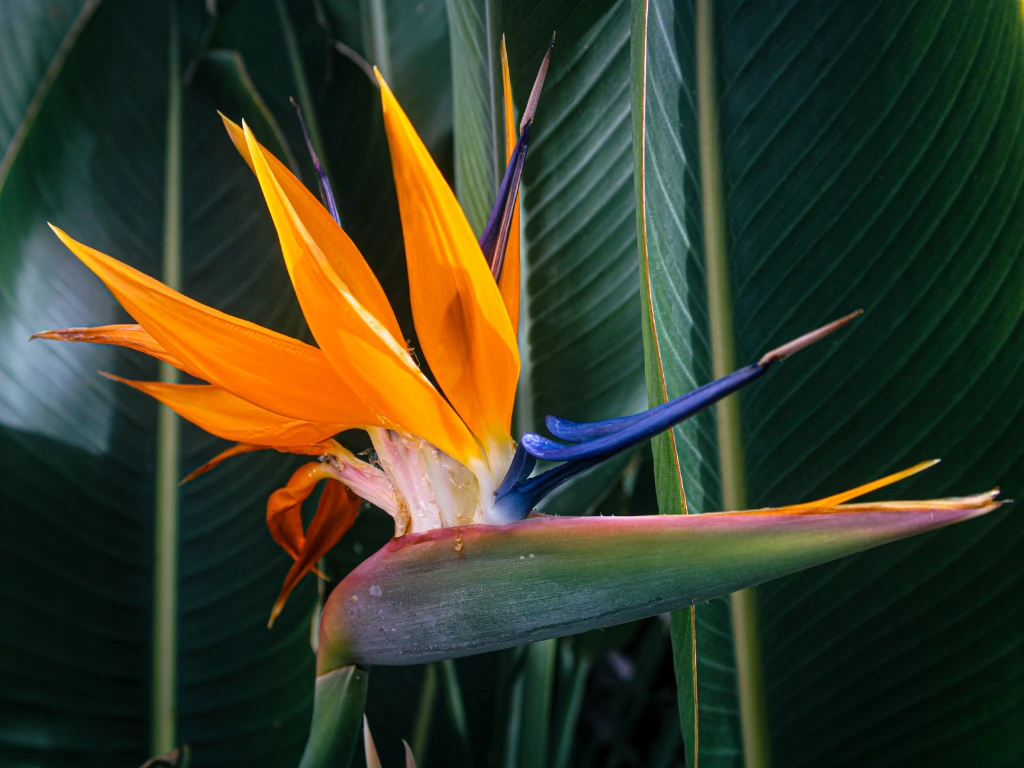
The Bird of Paradise, scientifically known as Strelitzia reginae, is a tropical treasure native to the lush landscapes of southeastern Africa, particularly South Africa. Its name comes from the striking shape and vibrant colors of its flowers, which look remarkably like a brightly colored bird in mid-flight—hence the name “Bird of Paradise.” Imagine a burst of fiery orange and brilliant blue petals fanning out like wings, creating a living piece of art that instantly commands attention.
This plant isn’t just about beauty—it carries an exotic charm that can instantly transform any garden, patio, or indoor space into a tropical oasis. The large, glossy, banana-like leaves add a lush, architectural element that makes it a favorite among gardeners and interior plant enthusiasts alike.
Moreover, the Bird of Paradise is surprisingly versatile. While it thrives in tropical and subtropical climates, it can adapt well to indoor environments if given bright, indirect light and proper care. Its bold flowers are a favorite in floral arrangements, symbolizing freedom, joy, and paradise itself—making it a plant that not only beautifies your space but also lifts your spirits.
In short, the Bird of Paradise is much more than just a plant; it’s a symbol of tropical elegance and natural artistry. Once you get to know its needs and quirks, you’ll see why so many gardeners fall in love with it.
Key Features of Bird of Paradise
-
Appearance: Striking, tropical flowers with vibrant orange and blue petals that resemble a bird in flight. Large, glossy green leaves add to its dramatic look.
-
Size: Can grow between 4 to 6 feet tall indoors, and up to 20 feet outdoors in ideal conditions, with a spread of 3 to 5 feet.
-
Blooming Period: Typically blooms from late winter through early fall, producing stunning flowers that bring a splash of color for months.
-
Light Needs: Thrives in bright, indirect sunlight to full sun, ideally receiving 4-6 hours of light daily.
-
USDA Zones: Best suited for zones 10-12; can be grown as a houseplant or brought indoors in cooler zones.
Ideal Growing Conditions for Bird of Paradise
-
-
Light: This plant loves bright light—think lots of indirect sunshine or a few hours of morning sun. If you’re growing it indoors, a south-facing window is often perfect. Too little light and your Bird of Paradise won’t flower or grow well.
-
Temperature: Bird of Paradise enjoys warm weather, ideally between 65°F and 70°F. It doesn’t like cold drafts or temperatures below 50°F. If you live in USDA hardiness zones 10-12, you can grow it outside. Otherwise, keep it indoors during chilly months.
-
Humidity: Since it’s a tropical plant, it appreciates moderate humidity. If your home is dry, try using a humidifier or placing the plant on a tray of wet pebbles to boost moisture around it.
- Toxicity: Toxic to pets [1].
-
How to Grow Bird of Paradise from Seed or Plant
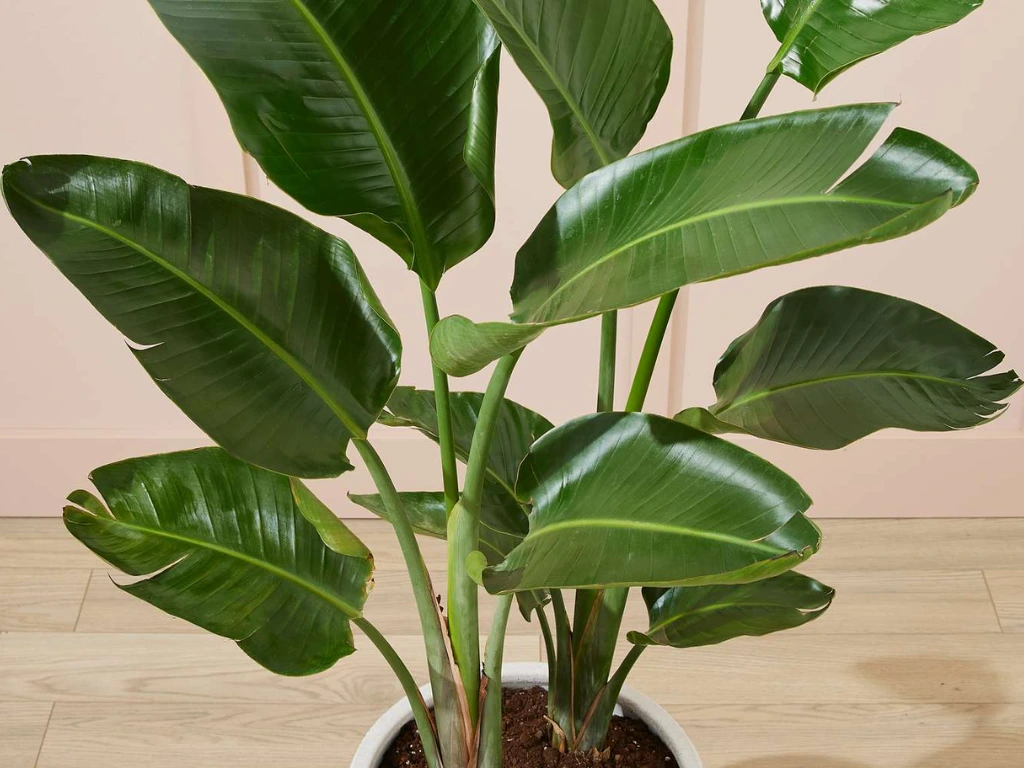
Here’s what you need to know:
Growing from Seeds: Step-by-Step
-
Soak Your Seeds: The seeds have a tough shell, so soak them in warm water for 24 to 48 hours. This helps soften the shell and speeds up germination.
-
Planting: Use a rich, well-draining potting mix made for tropical plants. Plant your seeds about an inch deep.
-
Keep Warm and Moist: Maintain soil warmth around 70°F and keep it moist (but not soggy). Germination can take anywhere from 1 to 3 months, so patience is key!
-
Light: Once sprouted, give your seedlings bright indirect light.
If you don’t want to wait, you can also buy young plants from a nursery. These mature faster and might bloom within 1-2 years.
Planting Tips for Seedlings and Mature Plants
-
Use pots with drainage holes to prevent water buildup, which can cause root rot.
-
When repotting, choose a container just a bit bigger than the current one so roots have room to grow without drowning in too much soil.
-
Regular fertilizing during spring and summer helps encourage growth and flowering.
Essential Care Tips for Bird of Paradise
Getting the basics right will keep your plant happy and healthy.
Light Requirements
-
Bird of Paradise is a bit like a sun lover—ideally, it needs at least 4-6 hours of bright indirect sunlight daily. If grown indoors, placing it near a south or west-facing window will help.
-
If your plant is not getting enough light, you might notice slow growth or no flowers. Consider supplementing with a grow light in the darker months.
Soil and Fertilizing
-
Use well-draining soil rich in organic matter. Adding some sand or perlite improves drainage and prevents soggy roots.
-
Fertilize your Bird of Paradise every 2-4 weeks during its growing season (spring and summer). Choose a fertilizer balanced for flowering plants or one higher in phosphorus, which supports blooming.
Watering
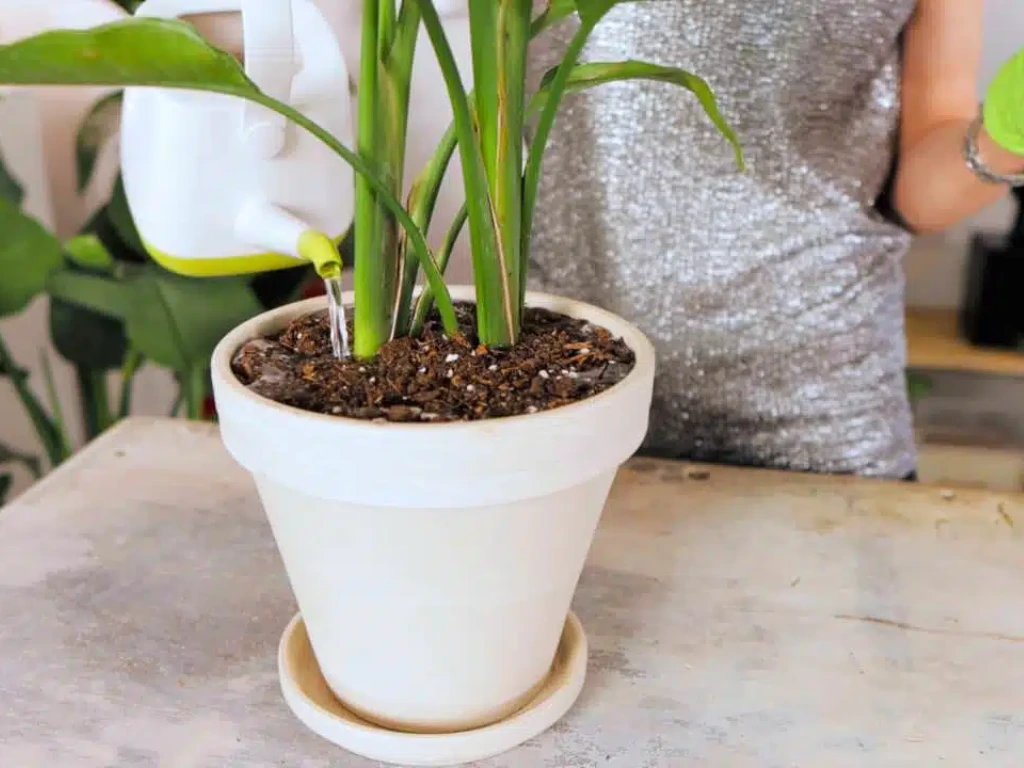
-
Water your plant deeply, but allow the top inch of soil to dry before watering again. Overwatering is a common mistake that can lead to root rot.
-
During winter or cooler months, reduce watering since the plant grows more slowly.
Temperature and Humidity
-
Keep your Bird of Paradise away from cold drafts and sudden temperature changes.
-
If your indoor air is dry, especially in winter, increase humidity with a humidifier or by placing a tray of water near your plant.
How to Make Bird of Paradise Bloom
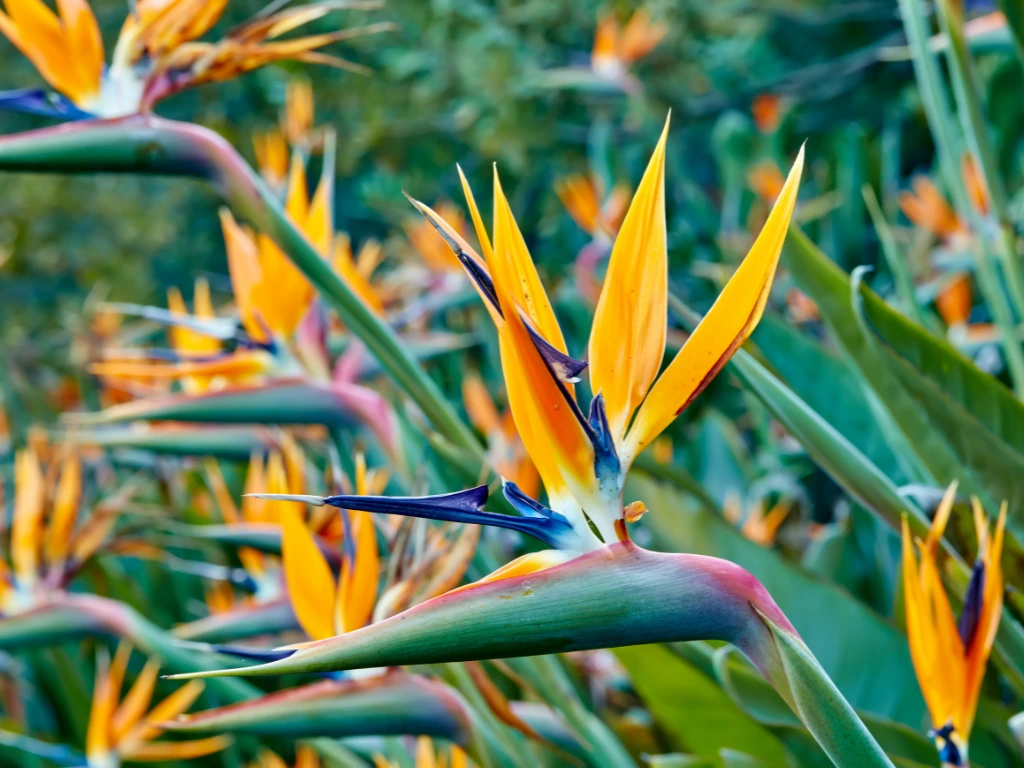
Nothing beats seeing those vibrant orange and blue flowers! But sometimes, despite all your care, the Bird of Paradise refuses to bloom.
Why Isn’t My Bird of Paradise Blooming?
-
Insufficient Light: If your plant isn’t getting enough light, it will focus on leaves, not flowers.
-
Too Young: Seed-grown plants may take 3-5 years before blooming. Patience is essential!
-
Too Much Nitrogen: Fertilizers high in nitrogen encourage leaf growth but can suppress flowers. Switch to a bloom-boosting fertilizer higher in phosphorus.
-
Root Bound: If roots are cramped, the plant may stop flowering. Repot into a larger container.
Pruning and Maintenance
-
Remove dead or yellow leaves to help the plant focus energy on healthy growth.
-
After flowering, prune back spent flower stalks to encourage new growth and more blooms.
Seasonal Care
-
Mimic natural wet and dry seasons: Water and fertilize more in the growing season and reduce during winter rest.
-
Outdoor plants may need protection from frost or extreme heat.
Troubleshooting Common Problems
Even with great care, problems can happen. Here’s how to tackle some common issues:
Pests and Diseases
-
Look out for spider mites, mealybugs, and scale insects. Wiping leaves with insecticidal soap usually takes care of these.
-
Root rot is common if watering is excessive or drainage is poor—make sure your pot has holes and soil drains well.
Reviving a Dying Plant
-
Check roots for rot and trim any mushy or dead sections.
-
Adjust watering habits and ensure your plant gets enough light.
Yellow Leaves or Wilting
-
Yellow leaves often signal overwatering or poor drainage.
-
Wilting might mean underwatering or shock from moving the plant.
Indoor vs Outdoor Growing Tips
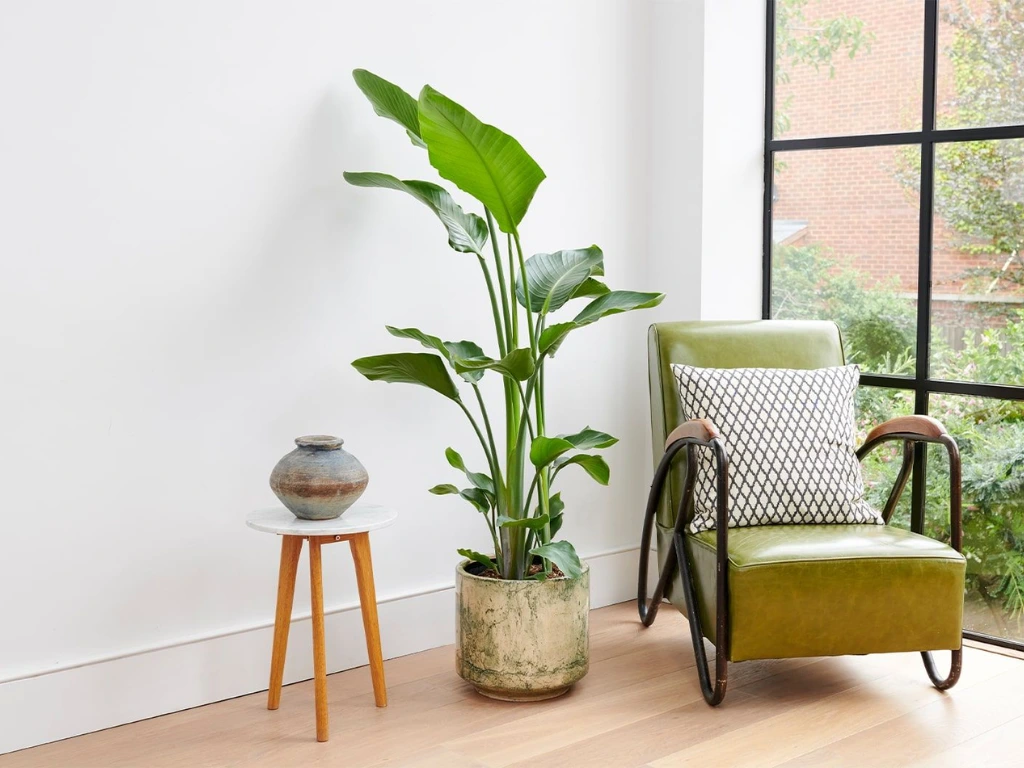
Indoor Care
-
Rotate your plant every week so all sides get sunlight and grow evenly.
-
Dust leaves occasionally to help photosynthesis.
-
Use grow lights in winter when daylight is limited.
Outdoor Care
-
In USDA zones colder than 10, bring your plant indoors during frost.
-
Plant in a location that gets morning sun and afternoon shade to avoid scorching.
Conclusion
Growing Bird of Paradise is a journey that requires some patience but delivers a stunning payoff. With the right light, soil, watering, and a little love, you’ll be rewarded with those breathtaking tropical flowers and bold leaves that brighten any space.
Start your Bird of Paradise adventure today—your home deserves a splash of the tropics!
Frequently Asked Questions
1. How long does it take for Bird of Paradise to bloom?
If you’re starting from seed, patience is key! Bird of Paradise plants usually take around 3 to 5 years before they produce those iconic, vibrant flowers. However, if you purchase a nursery-grown plant, you might be lucky enough to see blooms much sooner—often within 1 to 2 years—since these plants are already more mature.
2. Can Bird of Paradise survive frost?
Bird of Paradise is a tropical plant that loves warmth, so it does not tolerate frost well. If you live in a climate where temperatures drop below 50°F (10°C), it’s best to bring your plant indoors during the colder months. Frost can seriously damage the leaves and stunt growth, so protecting your plant from cold drafts and freezing weather is essential for keeping it healthy.
3. What soil mix is best for Bird of Paradise?
The secret to a happy Bird of Paradise starts with well-draining soil. A good mix includes regular potting soil combined with sand or perlite to improve airflow and prevent water from sitting around the roots. This type of soil keeps the roots healthy by allowing excess moisture to drain away, reducing the risk of root rot.
4. How often should I water my Bird of Paradise?
Watering needs can vary depending on the season and environment. A good rule of thumb is to water deeply once the top inch of soil feels dry to the touch. In the warmer summer months, this usually means watering about once a week. During cooler months or winter dormancy, you can cut back and water less frequently, just enough to keep the soil from completely drying out.
If you’re interested in other tropical houseplants or want tips on creating a lush indoor jungle, check out our guides on the Care Tips Blog. Happy gardening!
References
- ASPCA. “Bird of Paradise Flower.” https://www.aspca.org/pet-care/animal-poison-control/toxic-and-non-toxic-plants/bird-paradise-flower.


7 Vegetables to Plant in December for a Bountiful Winter Harvest
Winter gardening is a challenge many new gardeners shy away from. But if you’re among [...]
Dec
9 Common Christmas Cactus Problems and How to Fix Them
Have you ever walked past your Christmas cactus and wondered why it suddenly looks sad? [...]
Nov
Swedish Ivy Care: How to Grow a Healthy, Thriving Plant
Have you ever looked at your Swedish Ivy and wondered why the leaves are turning [...]
Nov
Avoid These 10 Garlic Planting Mistakes for Bigger, Healthier Bulbs
Growing garlic at home is one of the most satisfying things a gardener can do [...]
Nov
How to Prevent Christmas Cactus Bud Drop: Tips for a Healthy Bloom
Have you ever noticed your beautiful Christmas cactus (Schlumbergera) starting to lose its buds just [...]
Nov
Discover 7 Stunning Types of Night-Blooming Cereus
Have you ever waited for a flower that only opens at night and then disappears [...]
Nov